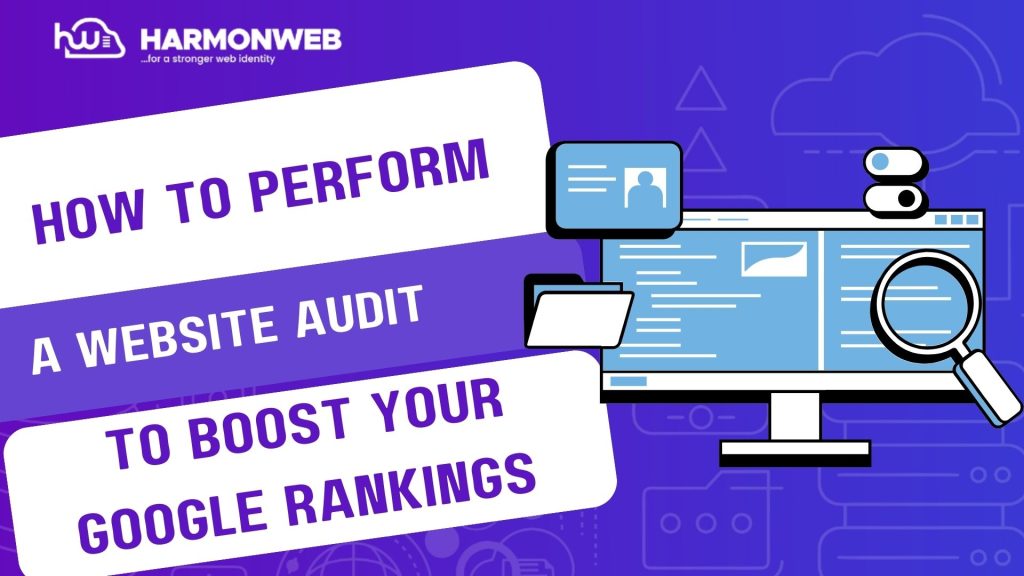Website Auditing is a comprehensive way of analysing the overall health of a website build up. In essence, a proper auditing can be compared to a health check up for we human, but in this case it is carry out to ensure that all boxes are tick for a website.
These audits typically focus on three key areas: on-page SEO, which ensures content is remarkable and aligns with searchers’ intent; off-page SEO, which secures high-quality backlinks from authoritative sites; and technical SEO, which provides a solid foundation for the previous two, ensuring all efforts yield optimal results in Google’s ranking.
Table of Contents
Why Perform A Website Audit?
Remember, that a stitch in time saves nine. The same principle applies to your website, which, like an automobile requires routine checks to ensure that the wheels keep on running. Website Audit offers numerous advantages to your sites, which include:
• Improve website crawlability and indexing.
• Enhance user experience and engagement.
• Increase website speed and mobile responsiveness.
• Boost search engine rankings and visibility.
• Identify and fix technical issues and errors.
5 Website Audit Checklist For All Webmasters
1. Analyze Your Website’s Technical SEO:
Technical SEO forms the foundation of your site’s performance and visibility. If Google’s bots can’t crawl, index, and understand your site efficiently, your rankings will suffer — no matter how great your content is or how good your backlink strategy. Part of your technical SEO is to analyse for website speed and mobile-responsiveness, as this shows that at the core you have the interest of your customers at heart. A site without https security make users to be wary of entering delicate data.
Key Areas to Check:
• Website Speed: Slow loading times lead to higher bounce rates and lower rankings. Use tools like Google PageSpeed Insights or GTmetrix to evaluate and improve your speed.
• Mobile-Friendliness: Google uses mobile-first indexing, so your site must look and work perfectly on mobile devices. Test this with Google’s Mobile-Friendly Test tool.
• Core Web Vitals: Metrics like Largest Contentful Paint (LCP), First Input Delay (FID), and Cumulative Layout Shift (CLS) directly impact user experience and rankings.
• Crawlability and Indexing: Ensure your robots.txt file isn’t blocking important pages and that your XML sitemap is up-to-date and submitted to Google Search Console.
• HTTPS Security: A secure site (with an SSL certificate) is a must-have for trust and SEO performance.
Solution:
• Fix any technical issues you discover during the audit.
• Compress images, enable browser caching, and use a Content Delivery Network (CDN) to boost loading speed. Make your design responsive and mobile-friendly, and ensure your site architecture is simple and easy to navigate.
• Regularly check Google Search Console for crawl errors and indexing issues and resolve them promptly.
2. Evaluate On-Page SEO:
On-page SEO ensures that each page on your site is optimized to rank well and provide value to your audience. Missing or poorly optimized on-page elements can prevent your content from reaching its full potential.
Key Areas to Check:
• Title Tags and Meta Descriptions: Ensure they are unique, keyword-optimized, and enticing enough to drive clicks.
• Headings (H1, H2, H3): Use proper heading hierarchy to organize your content and help search engines understand its structure.
• URL Structure: Keep your URLs short, descriptive, and keyword-rich — avoid unnecessary numbers or symbols.
• Keyword Optimization: Make sure you are using targeted keywords naturally throughout your content, in headings, and in alt text for images.
• Internal Linking: Link to relevant pages within your site to help Google understand your site’s structure and keep users engaged longer.
Solution:
• Audit every page to ensure SEO best practices are followed.
• Rewrite missing or duplicate meta descriptions, optimize your title tags, and add internal links to spread link equity across your site.
• Ensure your content is readable, engaging, and well-structured.
3. Assess Content Quality and Relevance:
Content remains a crucial ranking factor, but it is not just about quantity — quality and relevance matter even more. Google rewards helpful, informative, and engaging content that answers users’ questions. So it is best you put in effort into creating unique and remarkable content that cater to users’ curiosity.
Key Areas to Check:
• Content Depth and Value: Are your articles thorough, well-researched, and informative? Avoid thin or duplicate content.
• Keyword Usage: Are you matching search intent and naturally integrating relevant keywords?
• Readability: Is your content easy to read, with short paragraphs, bullet points, and clear language?
• Media Usage: Are you using images, videos, and infographics to make your content more engaging and understandable?
• Content Freshness: Is your content up-to-date and relevant to current trends and search behavior?
Solution:
• Update any outdated posts, remove thin content, and add more depth to short articles.
• Conduct keyword research and ensure you are meeting search intent. Make your content more engaging by adding visuals and real-life examples.
• Do not forget to proofread for grammar and clarity.
4. Check User Experience (UX) and Design:
A great user experience keeps visitors on your site longer and reduces bounce rates — both of which signal quality and relevance to Google. Users must be able to easily navigate their way around and find the information they needed with little or no help and as fast as possible.
Key Areas to Check:
• Navigation: Is your site easy to navigate with a clear menu and logical structure?
• Mobile Responsiveness: Does your site look and function well on different screen sizes?
• Page Load Speed: Slow pages frustrate users and hurt rankings — ensure your site loads in under 3 seconds.
• Call to Action (CTAs): Are your CTAs clear and persuasive, encouraging users to take the next step?
• Accessibility: Is your site usable for all visitors, including those with disabilities?
Solution:
• Simplify your navigation, use responsive design, and improve your page speed through image compression, minified CSS/JavaScript, and faster hosting like our hosting packages at harmonweb.
• Make sure your CTAs are prominent, and consider using heatmaps (like Hotjar) to see how users interact with your pages.
5. Audit Off-Page SEO and Backlink Profile:
Off-page SEO — like backlinks and social signals — shows Google that other websites trust and value your content. A weak backlink profile can hurt your authority and rankings.
Key Areas to Check:
• Backlink Quality: Are your backlinks from reputable, high-authority sites, or are they spammy and low-quality?
• Anchor Text: Are your backlinks using natural, varied anchor text, or are they over-optimized?
• Link Diversity: Do you have a good mix of follow and nofollow links from different domains?
• Social Signals: Are people sharing and engaging with your content on social media?
Solution:
• Use tools like Ahrefs, SEMrush, or Moz to analyze your backlink profile.
• Disavow toxic links and focus on building high-quality backlinks through guest posting, content outreach, and digital PR.
• Promote your content on social media and engage with your audience to increase shares and visibility.
Conclusion
A website audit isn’t just a one-time task — it is an ongoing process that ensures your site remains healthy, user-friendly, and optimized for Google’s ever-changing algorithms. Evaluating your site’s technical SEO, on-page elements, content quality, user experience, and off-page performance, you create a solid foundation for long-term success in search rankings.
Start by fixing technical issues, refining your content strategy, and enhancing your user experience. Once your site is fully optimized, you will see higher rankings, more organic traffic, and better engagement. Make website audits a regular part of your SEO strategy, and your site will stay ahead of the competition. Once again, remember the saying, “A stitch in time saves nine”. To your continued success, Harmonweb!





